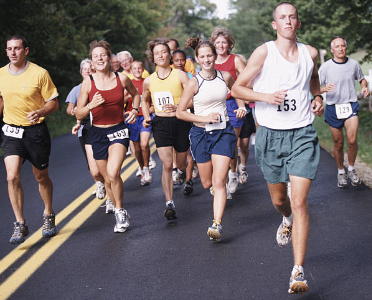The preparation training that goes into a marathon is important to prevent running injuries. It takes dedication, timing and skills to ensure that you make it to the finish line. In this blog, we are going to cover 3 physiotherapy tips to successfully prepare for your 42km journey and minimize any excess damage to the body.
Load Management: you have to be smart about your training in preparing for a marathon. This means understanding your limits and start slow. Find your baseline and slowly build up from there. A typical training camp for a marathon is 3-5 months of consistent training. You should start off with 3 runs per week. You should incorporate a long run once a week so your body can adjust to a longer distance. However, you should never increase your mileage by more than 10% between each week to avoid overuse injuries. Therefore, you should also have rest days where there is no running sessions to let your body recover from the stress you put on it. This will help you avoid those pesky overuse injuries.
Running Technique: The technique you use to run can determine how efficient you are at using your body in long distances. Running cadence is one of the most important factors in the running world. Cadence is known as the number of steps you take per minute. Optimal cadence should be at 170-180 steps per minute. The higher the cadence then the less amount impact your body makes on the ground. The ability to reach around 170 can translate to a reduction of up to 20% less ground reaction force. If you are unsure about your running technique, book in with one of our friendly physiotherapist to get a running assessment. We will look at foot strike, vertical oscillation and stride length. We will be able to spot out common biomechanical faults in running and teach you how to fix it.
Strength Based Training: The weight room is an important aspect in preparing for a marathon. You may believe that having more muscles will make you a slower runner and tax your aerobic capacity. This is not the aim of hitting the weight room for a marathon. We focus on building muscles at a higher repetition range to build muscular endurance for the long arduous journey of a marathon. It is about targeting specific running muscles to help prevent common running injuries that include, patellar tendonitis, Achilles tendinopathy and plantar fasciopathy. For example, a good strength program would include glutes and calf strengthening exercises. Our glutes have to work extra hard to stabilise our hips and knees during midstance. Calves are an essential to help us push off and propel us forward when we walk and run.
This information is for educational purposes only and is not intended to replace the advice of your doctor or health care professional. We encourage you to discuss any questions or concerns you may have with your health care provider.

